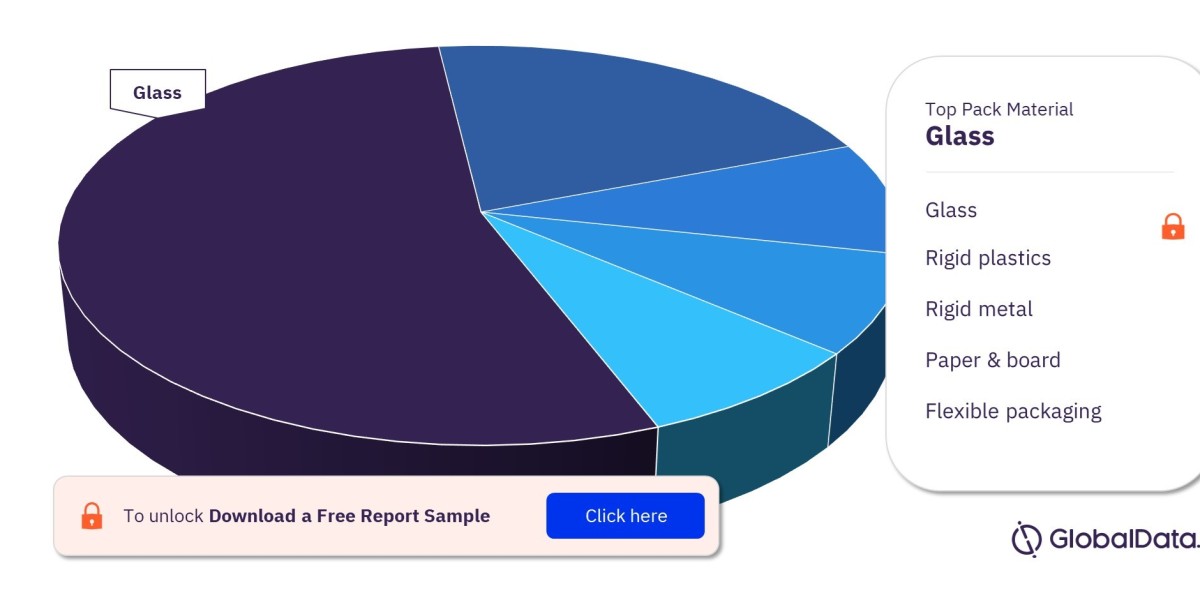Originally Published on: QuantzigNavigating Success: The Game-Changing CPG Data Analytics Trends for Manufacturers
Exploring the Dynamics of CPG Data Analytics
In the ever-shifting landscape of consumer goods, the prominence of CPG data analytics emerges as a revolutionary catalyst, steering businesses towards resilience and competitive prowess. CPG data analytics encompasses the systematic collection, analysis, and interpretation of data related to consumer-packaged goods (CPG), furnishing companies with indispensable insights into consumer behaviors, market trends, and the capacity to make strategic, data-driven decisions that profoundly influence product success.
The Strategic Evolution of CPG Data Analytics
From Operational Tool to Strategic Asset: In an era where over 80% of CPG companies employ data analytics to optimize supply chain operations, analytics has transcended from being a mere operational tool to becoming a strategic asset. Its prowess lies in transforming raw data into meaningful insights, enabling companies to decipher market trends, consumer preferences, behaviors, and needs.
Impact on Competitive Performance: Data-driven strategies, especially in pricing and promotion optimization, reap significant benefits from analytics. Implementing data-driven pricing strategies can result in a noteworthy 15% reduction in costs, while analytics-driven promotional campaigns amplify customer engagement and brand loyalty by 30%.
Crucial Aspects of Analytics: In the CPG industry, data analytics is instrumental in enhancing competitive performance, influencing pricing and promotion optimization, facilitating effective demand forecasting, and optimizing overall supply chain efficiency. It has become a necessity for thriving in the dynamic and competitive consumer goods landscape.
Key Metrics and KPIs Guiding CPG Data Analytics
Sales Performance Metrics: Foundational metrics like sales volume, frequency, and value play a pivotal role in assessing market position, understanding sales trends, and identifying areas for growth.
Inventory Turnover: Efficient stock management is gauged through inventory turnover rates, providing insights into strong sales or potential overstocking.
Consumer Segmentation Metrics: Understanding customer segments involves analyzing purchase history, preferences, and demographic data to tailor products and marketing strategies.
Marketing ROI: Calculating the return on investment for marketing campaigns aids in analyzing the effectiveness of different channels and strategies.
Supply Chain Efficiency: Metrics related to supply chain performance, including delivery times and transportation costs, are crucial for optimizing distribution processes.
Predictive Analytics Metrics: Advanced metrics encompassing predictive sales forecasting and demand planning help anticipate market changes and adjust strategies accordingly.
Incorporating these metrics into a comprehensive analytics dashboard offers a real-time view of a company’s performance. CPG companies can harness analytics tools to visualize complex data sets, transforming them into understandable and actionable insights.
Efficient Collection and Management of CPG Data
Diverse Data Sources: Data in the consumer goods industry originates from sales transactions, social media, customer feedback, syndicated data, and internal operations. Effective CPG data analytics relies on efficiently collecting data from these diverse sources.
Sales Transactions: As the primary data source, sales transactions provide insights into sales performance, consumer preferences, and market trends. CPG analytics tools aggregate and analyze these transactions to uncover actionable insights.
Social Media and Online Interactions: Digital platforms offer rich consumer data. Analyzing this data aids in understanding consumer sentiments, trends, and brand perception.
Customer Surveys and Feedback: Direct feedback offers a deeper understanding of customer needs, crucial for targeted and effective marketing strategies.
Syndicated Data: Purchased data from external sources provides broader market insights and competitive intelligence, essential for strategic planning.
Internal Operations Data: Data from internal processes, such as supply chain and inventory management, are vital for optimizing operational efficiency and forecasting demand.
Effective management of this data involves ensuring data quality, integrating various sources, and employing robust data analysis tools. CPG analytics software simplifies the management of large data sets, enhancing accuracy and efficiency.
Data Visualization and Reporting: A Pillar of CPG Analytics
Critical Components: Data visualization and reporting are pivotal components of CPG data analytics, translating complex data sets into comprehensible and actionable insights.
Dashboards and Data Visualization Tools: Utilizing dashboards and visualization tools is fundamental. These tools create visual representations of data, simplifying complex data for quicker insight identification.
Real-Time Reporting: The fast-paced nature of the CPG market demands real-time reporting capabilities for prompt responses to market changes, inventory optimization, and swift adjustment of marketing strategies.
Performance Tracking: Visualization tools assist in tracking key performance indicators (KPIs) and metrics, crucial for monitoring strategy and operation effectiveness.
Predictive Analysis Visualization: Advanced visualization tools play a significant role in predictive analytics, modeling different scenarios and forecasting future trends.
Data visualization and reporting in CPG analytics are about translating data into a story that guides business strategy and operations. CPG companies, by effectively utilizing these tools, ensure informed, timely, and data-driven decisions.
Predictive Analytics: A Cornerstone in CPG Decision-Making
Cornerstone of Decision-Making: Predictive analytics has become a cornerstone of CPG data analytics, driving data-driven decision-making and future-proofing strategies in the consumer-packaged goods industry.
Demand Forecasting: Critical for forecasting demand, predictive analytics analyzes historical sales data, market trends, and consumer behavior patterns for accurate predictions.
Consumer Behavior Prediction: Understanding and anticipating consumer behavior is key. Predictive analytics identifies emerging trends and consumer preferences for effective product and marketing strategies.
Optimization of Marketing Efforts: By analyzing consumer data and market dynamics, predictive analytics optimizes marketing campaigns, determining effective channels, messaging, and timing for higher engagement and ROI.
Supply Chain Optimization: Instrumental in optimizing supply chain operations, predictive analytics helps identify potential disruptions, optimize delivery routes, and forecast supplier performance.
Pricing Strategies: CPG companies use predictive analytics for dynamic pricing strategies, analyzing competitor pricing, consumer demand, and market conditions for effective decisions.
Predictive analytics in the CPG industry creates a roadmap for sustainable growth and competitiveness. By leveraging predictive analytics, CPG companies make more informed decisions, proactively respond to market changes, and maintain a competitive edge.
Customer Segmentation and Targeting: CPG Data Analytics Driving Success
Critical for Success: In the highly competitive CPG industry, effective customer segmentation and targeting are vital for success. CPG data analytics plays a pivotal role in enabling these strategies.
Identifying Customer Segments: Analytics helps segment customers based on demographics, purchasing behavior, preferences, and lifestyle, allowing for a more focused and personalized approach.
Targeted Marketing Strategies: Developing targeted marketing strategies based on customer segments allows companies to tailor messaging and campaigns to resonate effectively with each group.
Enhancing Customer Experience: Segmentation and targeting enhance the overall customer experience by delivering relevant and personalized interactions, increasing satisfaction, loyalty, and brand advocacy.
Predictive Targeting: Predictive analytics techniques enable CPG companies to predict future buying behaviors of different customer segments, leading to more timely and effective marketing efforts.
Effective customer segmentation and targeting, powered by CPG data analytics, enable companies to allocate resources efficiently, ensuring marketing efforts yield the best return on investment. This approach drives sales and builds stronger connections with consumers.
Pricing and Promotion Optimization: CPG Data Analytics Unleashing Competitiveness
Crucial for Competitiveness: In the dynamic CPG sector, effective pricing and promotion strategies are crucial for maintaining a competitive edge. CPG data analytics plays a central role in optimizing these aspects.
Data-Driven Pricing Strategies: Leveraging analytics for pricing decisions allows CPG companies to set prices reflecting market conditions, consumer demand, and competitor strategies, resulting in a 15% reduction in costs.
Promotional Effectiveness Analysis: Analytics evaluates the effectiveness of promotional campaigns by analyzing sales data, consumer responses, and market trends, informing successful future campaigns.
Customized Promotions: Insights from data analytics help design customized promotions appealing to specific customer segments, increasing efficacy and strengthening customer relationships.
Optimizing Promotion Timing and Channels: Analytics identifies the best times and channels for promotions by understanding consumer behavior patterns, strategically scheduling promotions, and choosing effective channels for maximum impact.
ROI Analysis: Analytics provides a means to measure the return on investment of pricing and promotional strategies, understanding the financial impact and guiding future strategies for better results.
By harnessing the power of CPG data analytics for pricing and promotion optimization, companies make more informed decisions driving sales and profitability. This optimization is not just about adjusting prices or launching promotions; it’s about creating strategies that resonate with the market and deliver tangible results.
Supply Chain and Distribution Analytics: CPG Industry's Efficiency Pillar
Pivotal for Efficiency: Effective management of the supply chain and distribution networks is pivotal for CPG companies. CPG data analytics plays a critical role in optimizing these aspects for efficiency, cost-effectiveness, and customer satisfaction.
Optimizing Supply Chain Operations: Analytics streamlines supply chain operations by analyzing factors such as transportation costs, delivery times, and supplier performance, leading to reduced operational costs and improved efficiency.
Inventory Management: Effective inventory management is crucial, and analytics enables companies to maintain optimal inventory levels by predicting demand patterns, reducing the risk of overstocking or stockouts.
Distribution Network Analysis: Analyzing distribution networks helps identify the most efficient routes and methods for product distribution, reducing delivery times and costs for enhanced customer service.
Supplier Performance Tracking: Analytics allows for the monitoring of supplier performance, ensuring that supply chain partners meet required standards and contribute positively to the company’s operations.
Demand Forecasting: Advanced predictive analytics are used for accurate demand forecasting, vital for planning production, managing inventory, and ensuring products are available when and where customers need them.
Supply chain and distribution analytics provide CPG companies with insights needed to optimize operations, reduce costs, and improve service levels. Analytics plays a crucial role in an industry where timely delivery and operational efficiency are key.
Navigating the Future of CPG with Quantzig’s Data Analytics Expertise
Data-Driven Transformation: The journey through the realms of CPG data analytics underscores its critical role in steering business success in the ever-evolving consumer goods market. Challenges demand more than conventional strategies; they require data-driven insights and actions.
Quantzig's Data Analytics Expertise: Quantzig stands at the forefront of this data-driven transformation in the CPG industry. Deep expertise in data analytics and a keen understanding of the CPG landscape empower businesses to turn their data into a strategic asset.
Tailored Analytics Solutions: Our commitment is not just to provide analytics services but to be a partner in our clients’ journey towards growth and market leadership. Leveraging state-of-the-art tools, advanced predictive analytics, and rich industry experience, we help CPG companies navigate market complexities and emerge as frontrunners in their domain.
In conclusion, the transformative potential of CPG data analytics is immense. Successful implementation can redefine market positions and drive unprecedented growth. With Quantzig as your analytics partner, the path towards a data-driven, insightful, and innovative future in the CPG industry is clear and promising.








